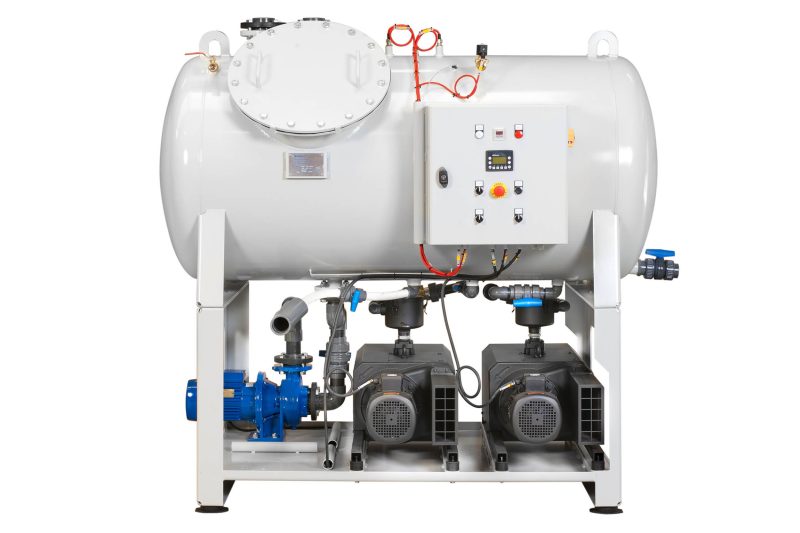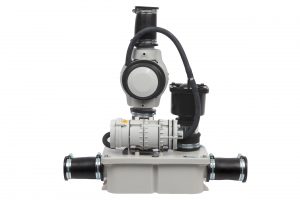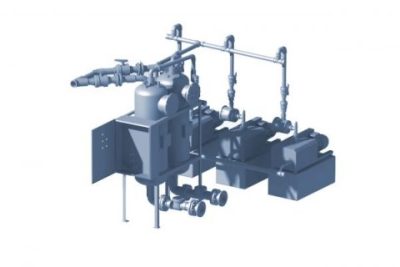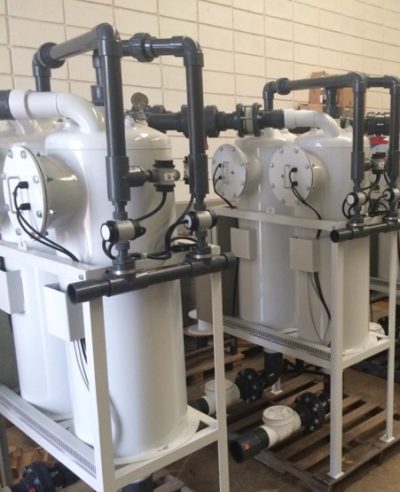
Evac N°10 HQE vacuum collection unit
With the Evac N°10 HQE vacuum collection unit, sewage is intercepted by the vacuum tank and does not pass through the vacuum pumps. This protects the pumps from clogging or damage by foreign objects resulting from vandalism or misuse of the vacuum toilets. The unit is composed of a 1,000-liter galvanized collection tank, two rotary-claw vacuum pumps (available with various flow rates), one or two discharge pumps, a control panel, connections for PVC (PN16) network pipes, and two inlet connections for the incoming flow. Evac N°10 HQE vacuum unit is fully compliant with the European standard EN 12109: Vacuum drainage systems inside buildings.
- For land-based applications
- Available in Europe, Middle East and Asia markets
- Fully compliant with the European standard EN 12109
- Competitively priced
- Compact design
- Large range of capacities and configurations
- No water consumption
- Low power consumption compared to liquid-ring pump systems
- Vacuum pump total capacity: 108 – 252 m3/h/63-148
- CFM depending on the model
- Discharge pump: 20m/DN50
- Rotary claw vacuum pump technology
- Tank capacity: 1000L/ 264 gal
The vacuum pumps are connected to the collection tank and then the pipe network. These pumps maintain a constant level of vacuum in the system. The electronic vacuum measurement system regulates the starting and stopping of the pumps. The collection tank collects wastewater from the pipe network (branch and main) through two DN65 inlets located in the upper left part of the tank.
When the vacuum pumps are running, vacuum is created throughout the system. When needed, the vacuum pumps stop and the discharge pump is activated to discharge the tank to the sewage system through the DN50 PVC pipe. The entire system can be managed from a single PLC control panel. All Evac vacuum collection units are equipped with fault diagnostic systems and volt-free connections for BMS.
During normal operation, air and sewage enter the collection tank from the toilets and vacuum interface valves. As the operating vacuum decreases, the vacuum sensor starts the lead vacuum pump. The vacuum pumps maintain the vacuum for the operation of the toilets and interface valves.
As sewage is collected, the vacuum decreases to 14 inHg, which starts the lead vacuum pump. The lead pump restores the vacuum to 18 inHg. The lead and lag pump alternate for each operating cycle.
During peak loading conditions, the lag vacuum pump will cut in if the vacuum drops to 12 inHg. If the vacuum continues to remain below 12 inHg for 10 minutes or more, the low vacuum alarm will come on.
Each vacuum pump runs for 10 minutes once there is a demand for vacuum. The vacuum pump isolation valve automatically opens and closes to regulate the vacuum in the tank during operation. Each collection tank contains three level sensors, positioned to notify system operators when the tank is at low level (30%), high level (75%), and block level (80%).
It is recommended to discharge the sewage before the tank reaches high level. When block level is reached, the system will stop running and sewage must be discharged before normal operation can resume.
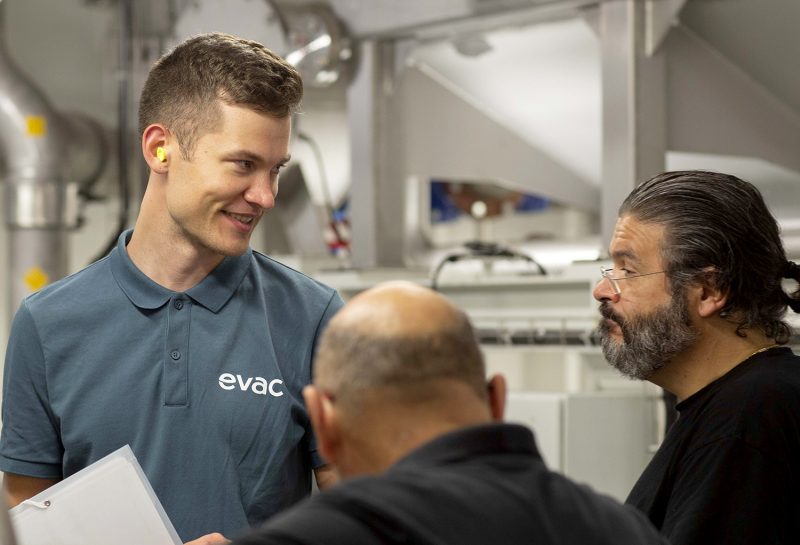
Evac Lifecycle Management
For all our systems and solutions, we offer a comprehensive portfolio of services throughout the operational life of the delivered solution or equipment.
